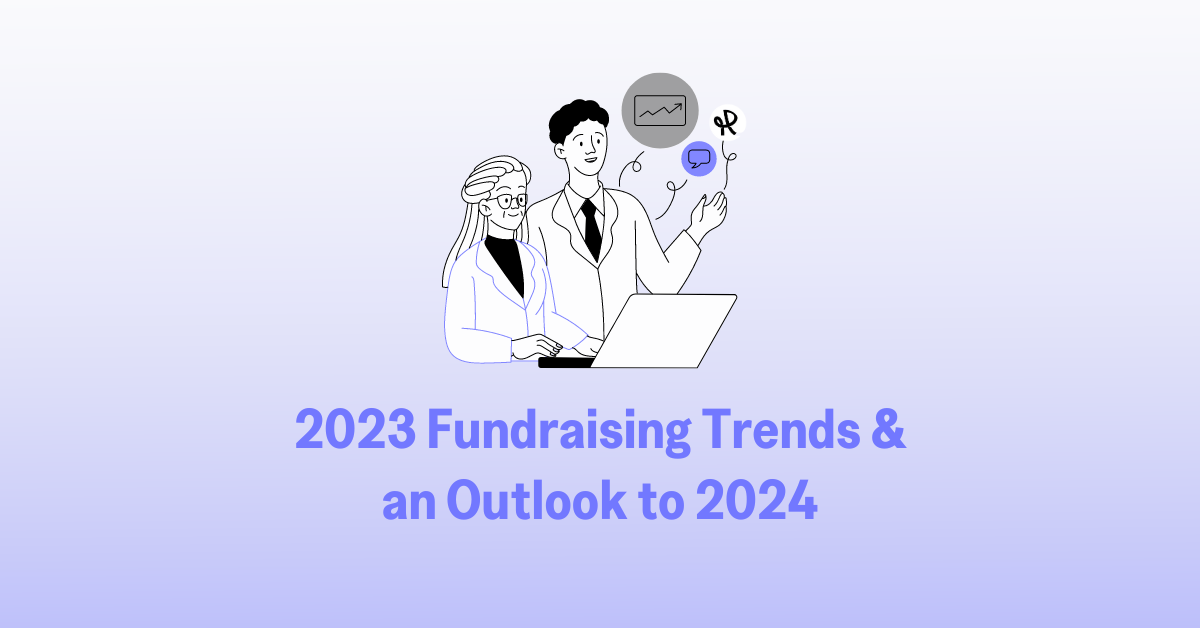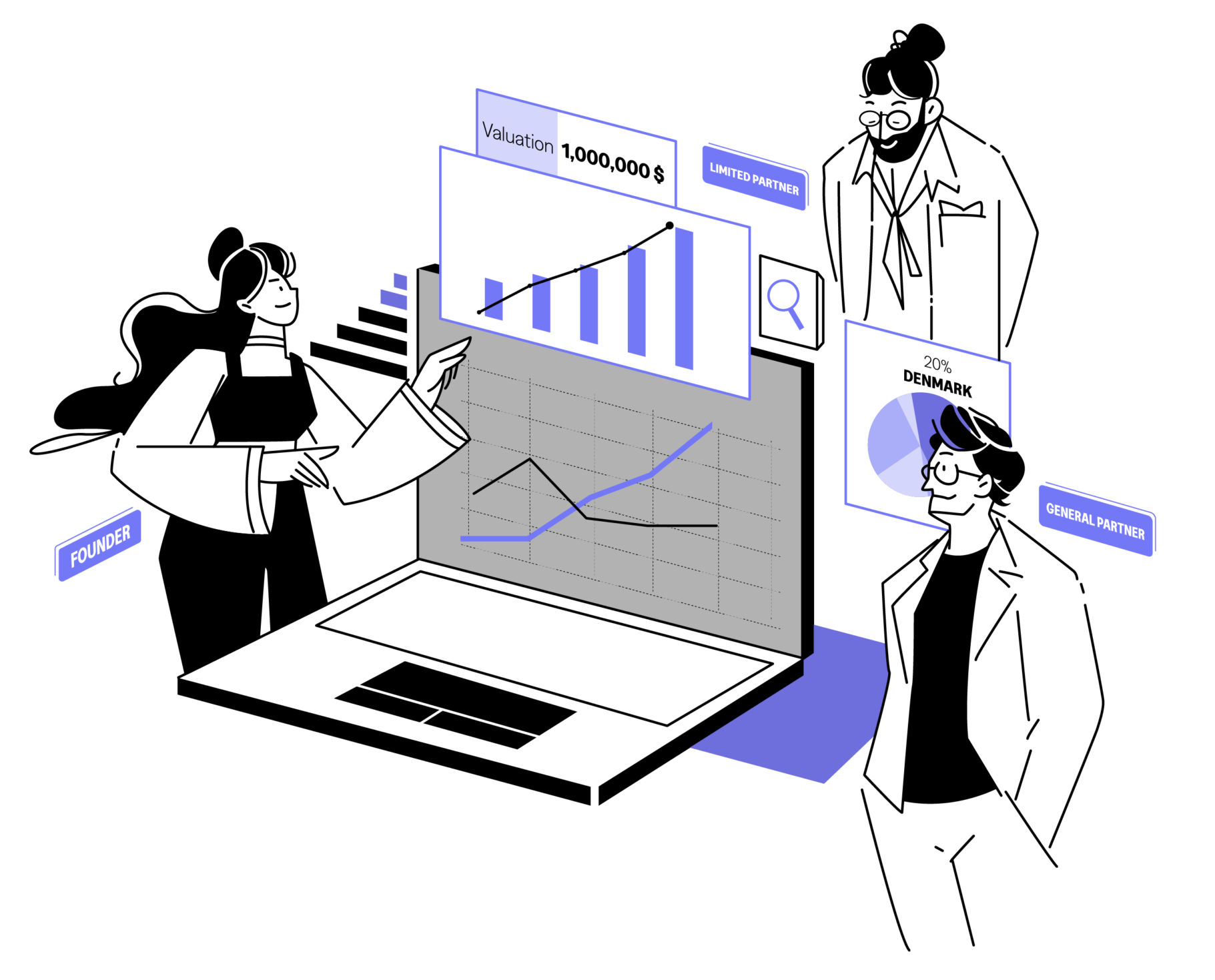
Table of Contents
2023 posed significant challenges for venture capital firms, marked by a complex economic and market landscape that demanded resilience and adaptability. In Europe, the venture market didn’t experience the recovery many had hoped for in Q1 2023, with annual dealmaking falling substantially short of the highs seen in the previous two years.
Here are some figures from 2023:
Another factor was LP attitudes to the VC landscape. As the primary capital source for VC firms, LPs’ investment appetites critically shape the health and success of the European tech ecosystem. For 2023, LP sentiment did not fare well.
According to the State of European Tech, 2023 marked a striking increase (20% in 2023, an 8% increase from 2022) in the proportion of LP respondents who reported a decreased willingness to invest in European venture capital. In contrast, only 18% of LP respondents indicated an increased appetite for investment, while a majority of 62% reported no change. The changing LP appetite, marked by a cautious approach, reflects broader market uncertainties and economic challenges.
In and of itself, comparing 2023 with the last two years paints a desperate picture. Let’s pause for a second and take a good, critical look at the overall dynamics and in the context of long-term growth trends.
Despite an almost half decline from the previous year, €57 billion in European VC deal value in 2023 still ranks as the region’s third-highest annual total and surpasses the 10-year average.
Looking at the mixed LP sentiment (with a resilient majority retaining an unchanged stance in the face of a downturn) suggests a nuanced understanding among LPs of the need to invest consistently through thick and thin and even recognizing that downturns can present attractive investment opportunities. Indeed, the majority of LPs demonstrate an unshaken, long-term confidence in the VC asset class.
Despite the challenges faced in 2023, the European VC landscape also witnessed a number of success stories where some sectors and companies managed to thrive, attracting significant investments. Notably, sectors like greentech, healthcare, and deeptech continued to draw investor interest, reflecting a growing emphasis on sustainable and future-proof business models. Several early-stage companies in these sectors achieved remarkable growth, benefiting from the strategic shift of VC firms towards more resilient and socially responsible investments.
Despite all its contradictions, there are signs of enduring structural growth in the European VC landscape. While the downturn has certainly tested the region’s resilience as well as questioning the previously exercised strategies, it’s becoming more and more apparent that VCs need to focus on the lessons learned and the opportunities that lie ahead in the evolving landscape.
In terms of prospects for successful fundraising, this will mean evolving and adapting while seeking success in new territories.
Having highlighted the contradictory landscape of European VC in 2023, let’s try to conceptualise some of the fundraising trends we observed in the industry. These trends not only offer a clearer perspective on the industry’s current state but also provide insights into the broader trajectory of the venture capital market in 2024 and beyond. The ecosystem is ever-evolving and understanding the LP undercurrents can prove advantageous for VC firms in anticipating future movements and shaping strategies to successfully navigate the ecosystem.
In the midst of an economic downturn with the prevailing market conditions exerting pressure on VC firms to secure liquidity, there has been a marked surge in the number of VCs seeking funding from institutional LPs, which tends to be countercyclical. This increased demand has consequently ushered in heightened competition among VCs, leading to more rigorous due diligence processes.
This increase in demand for LP investment is further compounded by the evolving landscape of policy-based mandates through which Development Finance Institutions (DFIs) typically spend their money. For large institutional LPs like the European Investment Fund (EIF), these mandates introduce a wave of new requirements, adding to the complexity and duration of the investment cycles. Such complexities are not just procedural but also strategic, as they demand a deeper understanding and alignment with the emerging policy frameworks.
As an example, in its Operational Plan 2023-2025, the EIF clearly states that the mandates signed with the European Investment Bank and the European Commission make up 74% percent of their activity.
Increased demand, competition as well as new complex mandates are then met with a lack of adequate resources and headcount within many large institutional LPs, hampering their ability to efficiently manage the increased workload and, therefore leading to further delays in fundraising cycles. Indeed, what used to be a 12-month investment cycle is now a whopping 18-24 months.
In 2023, a distinct preference emerged among LPs for allocating capital to experienced fund managers, with around more than half of LP money going into experienced GPs. Tied to the previous point on heightened demand and investor scrutiny, LPs – now more risk-averse – seek to invest in VC firms that have a proven track record of successful investments.
Experienced VCs are typically seen as safer bets in a volatile market, typically possessing deeper market insights, stronger networks, and more resilience in navigating economic uncertainties.
By default, first-time or emerging teams face greater challenges in attracting the target LPs, being subject to intensified screening cycles and higher rejection rates amid increased competition.
There has been a significant shift towards ESG factors, with LPs increasingly prioritising investments that demonstrate strong environmental, social, and governance credentials. This trend mirrors a broader global movement towards sustainability and responsible investing, and VC firms have recently had to start adapting by showcasing how their investments align with these criteria.
In its 2023-2025 Operational Plan, the EIF, as the biggest Fund of Fund LP in Europe, has openly stated a critical shift towards a more ESG-driven thematic investment approach as well as a renewed transparency to make public its contribution to the Sustainable Development Goals (SDGs).
The winning sectors of the 2023 downturn have been, by a large stretch, deeptech and climate tech, together amounting to more than 60% of total VC investments in 2023. According to a report by Dealroom, energy storage, clean energy, vehicle production, and biotechnology are among the leading sub-sectors.
LPs are showing a growing interest in these areas due to their potential for significant impact and long-term value creation. As a result, many VC firms are aligning with LPs’ desire to invest in transformative, long-term technologies.
Diversity and inclusion have become important factors in the investment decisions of LPs. There’s a growing recognition of the value brought by diverse perspectives and leadership, particularly the need for more female-led and ethnically diverse VC teams. With bigger institutional investors adopting more policy-driven investment strategies, the emphasis on gender inclusion and diversity when backing GPs is now greater than ever.
In order to further showcase its commitment to gender inclusion in the VC landscape, the EIF, along with Invest Europe, produced the most in-depth report to date on European VC and gender diversity trends.
As we step into 2024 and look beyond, the European venture capital landscape is poised for an intriguing evolution. The trends of 2023, marked by heightened competition, a pivot towards sustainability, and the rise of sectors like deeptech and climate tech, paint a picture of a more discerning and impact-driven VC ecosystem. The preference for experienced VC teams and the increased focus on diversity and female-led teams hint at a more inclusive and mature market.
The cautious optimism expressed by LPs, despite their reluctances in 2023, suggests a recognition of the cyclical nature of venture capital. The majority’s unchanged investment stance, despite market downturns, is indicative of a deep-seated belief in the resilience and long-term potential of the European VC sector. This resilience, coupled with the successes in greentech, healthcare, and deeptech, demonstrates the enduring allure of innovative and sustainable business models.
Looking forward, the European VC landscape is expected to adapt and evolve, embracing these new trends. VC firms will likely focus on aligning with LP expectations, emphasising responsible and impactful investments. The increase in due diligence periods and the emphasis on ESG factors are not temporary shifts but represent a fundamental change in the investment paradigm. The sectors that thrived during the downturn are expected to continue their rise, bolstered by a global shift towards sustainability and technological advancement.
In conclusion, the European VC sector is on a path to becoming more strategic, inclusive, and impact-focused. The challenges of 2023 have set the stage for a more nuanced and mature market, one that balances risk with responsibility and innovation with sustainability. As we move into 2024, the European VC ecosystem is likely to emerge stronger, more resilient, and more attuned to the evolving demands of a rapidly changing world.
Hale Yildiz is the Head of Business Development at Pitch Me First, where she leverages her experience gained in the EIF in the venture capital and private equity space. At Pitch Me First, she collaborates closely with Tulin (CEO and advisor) in guiding European VC/PE firms in enhancing their fundraising strategies driving innovative advisory and marketing solutions to help GPs achieve their funding goals.

Are you looking for an efficient way to create and share LP reports with your Limited Partners? Book a call today and let’s discuss your business setup and requirements!

Consolidate your portfolio and fund data in one single report.